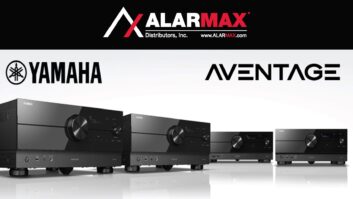The Digital Home Working Group (DHWG) expects to recommend in June its first set of interoperability standards for sharing content among networked PCs and consumer electronics products in the home.
The 111-member group, formed in mid-2003, plans to begin certifying products that conform to the guidelines in the first half of 2005. The group, however, expects compliant products to become available in the second half of this year, although they won’t bear a certification logo that it is still under development.
For its guidelines, the consortium plans to select existing licensable media formats, physical-layer network standards and other standards that certified products must incorporate to guarantee the seamless sharing of audio, video and digital still images among networked home devices.
A second round of certification guidelines will bring mobile devices, such as PDAs and cellphones, into the network. Those guidelines will be issued sometime after the home guidelines are issued, the group said.
The home standards, the group said, will enable consumers, “to enjoy content easily and conveniently — regardless of source — across different devices and at multiple locations in a home.” The effort “will enable them to acquire, store, access, manage, view, play back, transport, distribute and enjoy all sorts of digital content — easily and relatively effortlessly.”
For 2004-2005, the requirements will focus on interoperability between networked entertainment and media devices, but the group might broaden its charter later on to include home control, home communications and “more advanced entertainment services,” the group said without elaborating.
To achieve its immediate goals, the group is specifying minimum requirements that products must meet to wear the DHWG certification logo, which will assure consumers that products bearing the logo will work together. The group also plans to promote the certification program to consumers.
To guarantee interoperability, the group will require that certified devices feature specific audio, video and still-image formats as a “common baseline,” but it is also allowing certified devices to offer optional formats as long as the devices convert the optional formats to one of the group’s required formats.
The required media formats are PCM for audio, MPEG-2 for video and JPEG for digital images. Optional audio formats are AAC, AC-3, ATRAC3plus, MP3 and Windows Media Audio 9. Optional video formats are MPEG-1, MPEG-4 and Windows Media Video 9. Optional imaging formats are GIF, TIFF and PNG.
To deliver connectability, the consortium is considering the inclusion of a limited number of physical-layer standards, including wired Ethernet and wireless 802.11a/b/g network standards. The Internet protocol (IP) is under consideration as the network protocol, and HTTP is under consideration as the protocol for streaming content over a home network, said Scott Smyers, president of the group’s board of directors. For device discovery and control, the group is considering Microsoft’s Universal Plug and Play (UPnP). The group won’t define a specific user interface.
The first round of guidelines won’t specify baseline digital-rights-management (DRM) standards or quality-of-service (QoS) standards. The latter would prevent streaming audio and video dropouts resulting from data collisions on the network.













